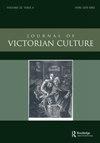Queer for Art: Tennyson’s Poetic Autonomy as Female Same-Sex Desire
IF 0.2
3区 历史学
Q2 HISTORY
引用次数: 0
Abstract
This article argues that in ‘The Lady of Shalott’, and later, to lesser degree, in In Memoriam, Alfred Tennyson expresses artistic autonomy by a Renaissance poetic trope of female same-sex desire. He does so to do away with the aesthetic closure and separation from the world implied by lesbianism in the Renaissance poetic imaginary. Via readings of these two poems, as well as historical and biographical examination of Tennyson’s writings and contemporaries’ writings about Tennyson – including later sexological writings – this article suggests that Tennyson’s choice of early modern aestheticized lesbianism as figure over the Hellenistic, intellectualized, male homoeroticism newly available in his Oxbridge milieu was personally as well as poetically motivated. Tennyson’s letters and biographies show that the poet was steeped in the tradition of erotic similitude. His poetry suggests that he anticipated the negative association between aestheticism and male homosexuality that would mark the end of his own century, so he portrayed solipsistic artistic production as linked to a female homoeroticism verging on autoeroticism. This article then offers a history of the strategic revival of a specific cultural-imaginary arrangement of female same-sex desire, and re-evaluates Tennyson’s place in the history of nineteenth-century homosexuality. Finally, in tracing erotic similitude’s relationship to autoeroticism, this article articulates the poetic and political stakes of historical morphologies of male homosexuality constructed as social, productive, and active, versus persistent constructions of female homosexuality as sterile, heretical, and anachronistic.追求艺术:丁尼生作为女性同性欲望的诗意自主
本文认为,在《夏洛特夫人》以及后来的《回忆》中,阿尔弗雷德·丁尼生通过文艺复兴时期女性同性欲望的诗意比喻表达了艺术自主性。他这样做是为了消除文艺复兴诗歌想象中女同性恋所隐含的审美封闭和与世界的分离。通过对这两首诗的阅读,以及对丁尼生作品和同时代人关于丁尼生的作品(包括后来的性学作品)的历史和传记考察,本文表明丁尼生选择早期现代审美化的女同性恋作为人物,而不是希腊化的、智能化的、,他在牛津剑桥大学的环境中新近出现的男性同性恋既有诗歌的动机,也有个人的动机。丁尼生的信件和传记表明,诗人沉浸在情色相似的传统中。他的诗歌表明,他预见到了唯美主义和男性同性恋之间的负面联系,这将标志着他自己的世纪的结束,因此他将唯我主义艺术作品描绘成与近乎自我色情的女性同性恋联系在一起。然后,本文提供了一段女性同性欲望的特定文化想象安排的战略复兴史,并重新评价了丁尼生在19世纪同性恋史上的地位。最后,在追溯情色相似与自身情色的关系时,本文阐明了男性同性恋被构建为社会性、生产性和积极性的历史形态,与女性同性恋被持续构建为不育、异端和时代错误的历史形态的诗意和政治利害关系。
本文章由计算机程序翻译,如有差异,请以英文原文为准。
求助全文
约1分钟内获得全文
求助全文

 求助内容:
求助内容: 应助结果提醒方式:
应助结果提醒方式:


